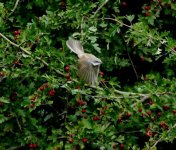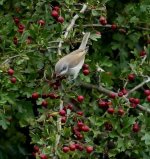KenM
Well-known member
Shot early September, thinking there's a lot of white in the outer tail margins. Question...what might be the consensus on the extent of the ''white'' does it include both outer rectrices and if so, does this make it an Eastern contender, also the brown wash appears to extend up the nape?
Cheers
Cheers






